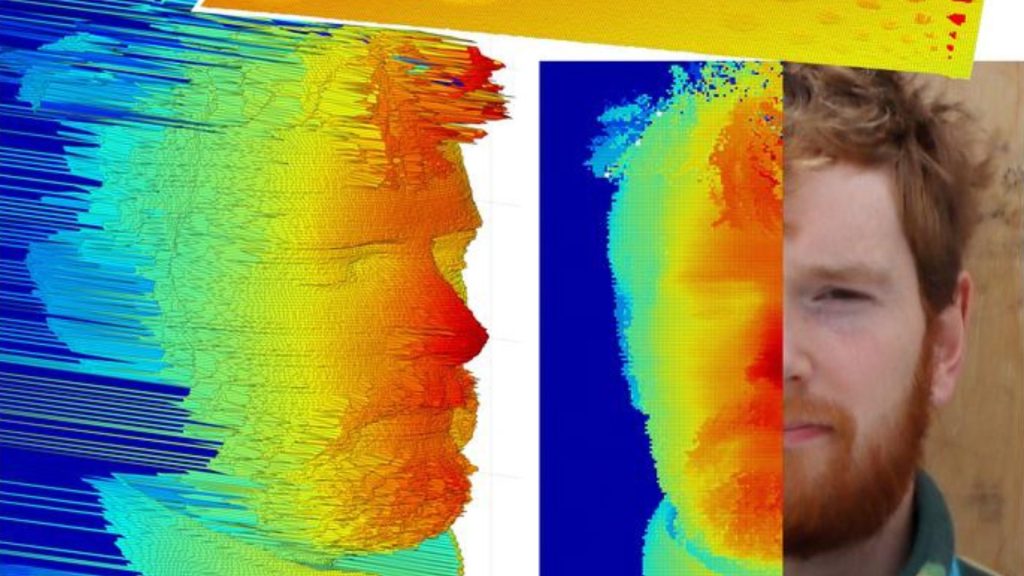New laser technology that scans a face half-a-mile away developed – Interesting Engineering

This technology could advance security, monitoring, and remote sensing.21 hours agoa day ago2 days ago2 days ago2 days ago2 days ago2 days ago2 days ago2 days ago2 days ago28 minutes agoan hour ago11 hours ago13 hours ago14 hours ago15 hours ago16 hours ago16 hours ago18 hours ago18 hours agoMrigakshi DixitThe images depict a recognizable human face from a person 325 meters away. Aongus McCarthy, Heriot-Watt University
A new LiDAR system has been developed that may see through fog and smoke to reveal hidden objects and provide highly detailed remote sensing capabilities. This technology could advance security, monitoring, and remote sensing.This uniquely designed LiDAR system is based on “single-photon time-of-flight” technology to acquire high-resolution 3D images of objects. Interestingly, the new system can clearly image a human face in 3D up to half a mile away.“This type of measurement system could lead to improved security and monitoring systems that could, for example, acquire detailed depth images through smoke or fog and of cluttered scenes,” said Aongus McCarthy from Heriot-Watt University in the UK. “It could also enable the remote identification of objects in various environments and monitoring of movement of buildings or rock faces to assess subsidence or other potential hazards,” added McCarthy, who is the study’s first author.LiDAR, or Light Detection and Ranging, works by measuring the time it takes for a laser pulse to travel to an object and back. This time-of-flight measurement reveals the distance, and by scanning across an area, a 3D image is created.This new tech utilizes a superconducting nanowire single-photon detector (SNSPD), an ultrasensitive detector developed by the MIT and NASA Jet Propulsion Laboratory.This detector can register individual photons, enabling the use of low-power, eye-safe lasers for rapid, long-distance measurements. “Our system uses a single-photon detector approximately twice as efficient as detectors deployed in similar LiDAR systems reported by other research groups and has a system timing resolution at least 10 times better,” McCarthy explained.“These improvements allow the imaging system to collect more scattered photons from the target and achieve a much higher spatial resolution,” McCarthy added. This detector was integrated with other technologies such as a custom-built single-pixel scanning system operating at a 1550nm wavelength. Precise timing equipment was also incorporated.The LiDAR system underwent field testing at Heriot-Watt University. Measurements were acquired from objects located at distances of 45 meters, 325 meters, and one km away.Researchers tested the system’s resolution by scanning a 3D target and capturing images of a human face at these distances. The system resolved features down to 1 mm – a 10x improvement in depth resolution over previous attempts. Using an eye-safe 3.5 mW laser, they captured a 3D image of a human face at these distances in just 1 ms per pixel.“The excellent depth resolution of the system means that it would be particularly well suited for imaging objects behind clutter, such as foliage or camouflage netting, a scenario that would be difficult for a digital camera,” said McCarthy. “For example, it could distinguish an object located a few centimeters behind a camouflage netting while systems with poorer resolution would not be able to make out the object,” McCarthy noted in the press release.Up next, the team plans to extend testing of the LiDAR system to 6.2 miles (10km) and investigate its performance through obscuring conditions like smoke and fog.The findings were published in the journal Optica.Stay up-to-date on engineering, tech, space, and science news with The Blueprint.By clicking sign up, you confirm that you accept this site’s Terms of Use and Privacy PolicyMrigakshi Dixit Mrigakshi is a science journalist who enjoys writing about space exploration, biology, and technological innovations. Her work has been featured in well-known publications including Nature India, Supercluster, The Weather Channel and Astronomy magazine. If you have pitches in mind, please do not hesitate to email her.a day agoa day agoa day ago2 days agoPremiumIE PROFollow
Source: https://interestingengineering.com/innovation/single-photon-lidar-system-created





